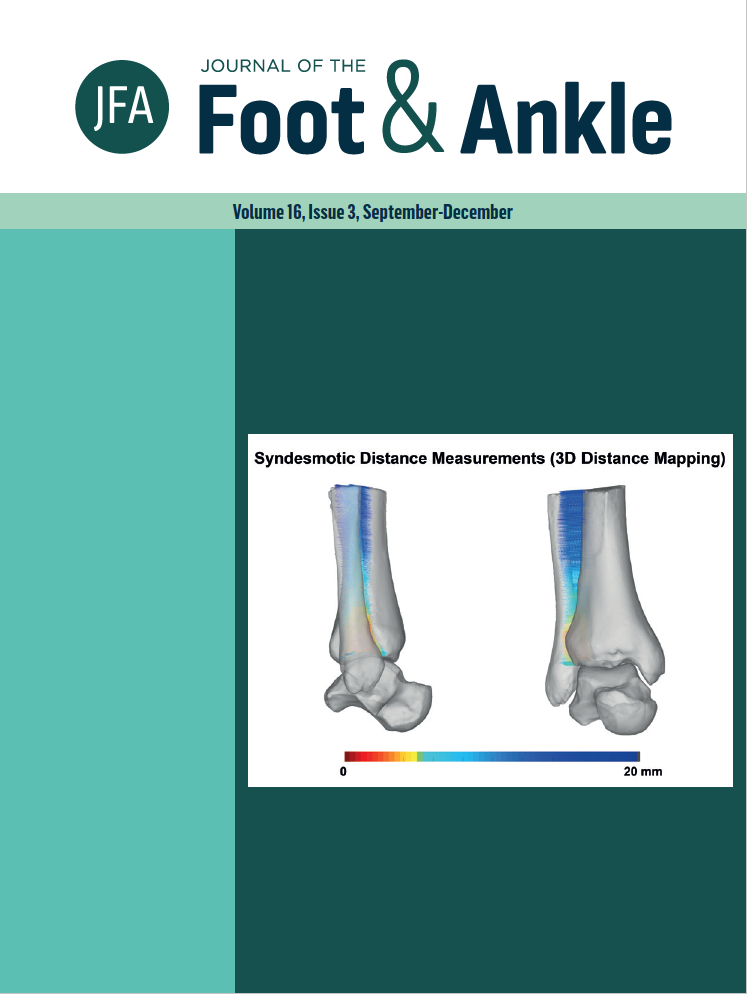Posterior femoral hemiepiphysiodesis for genu recurvatum with equinus foot deformity: a novel surgical proposal
DOI:
https://doi.org/10.30795/jfootankle.2022.v16.1665Keywords:
Child, Knee, Joint deformities, acquired, Orthopedic procedures/methodsAbstract
Genu recurvatum is characterized as an hyperextension deformity of the knee in the sagittal plane and can be associated to structured equinus deformity of the ankle and foot. Amongst its causes are conditions like arthrogryposis, cerebral palsy, tibial tuberosity arrest, poliomyelitis and syndromes with generalized ligamentous hyperlaxity. The treatment of this condition can be challenging, specially when associated with equinus of the foot and, to date, aggressive methods such as femur or tibia osteotomies are the most used for its correction. We describe here a safe and minimally invasive technique with posterior hemiepiphysiodesis of the distal femur performed with transphyseal screws for correction of the genu recurvatum with apex on the distal femur associated with rigid equinus of the foot due to tarsal coalition. This technique has great potential for correcting the recurvate knee in the immature skeleton and can be an excellent alternative to the more aggressive methods currently used for the treatment of this deformity. Level of Evidence V; Therapeutic Studies; Expert Opinion.
Downloads
Published
How to Cite
Issue
Section
License
Copyright (c) 2022 Journal of the Foot & Ankle

This work is licensed under a Creative Commons Attribution-NonCommercial 4.0 International License.







